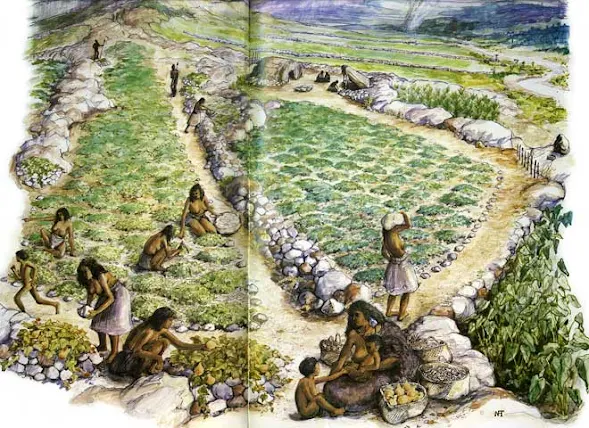This artist's impression shows a food garden in the Auckland region. Its
crops include taro at lower right and hue (bottle gourds) at lower
left. The larger plots contain kūmara (sweet potato) plants. The plots
are kept free of weeds, and protected by stone walls and wooden fences.
Women harvest the hue and the smaller kūmara for making kao (dried
kūmara).
The rich volcanic soil in the Auckland district supported extensive
areas of garden from the 15th century. Scattered stones at Ōtuataua,
near Auckland International Airport, once formed walls around garden
plots. These paenga-maru (sheltering and dividing walls) were up to one
metre high. They marked off the kūmara cultivations, owned and worked by
different whānau and hapū groups. The existing stone wall on the left was built in the mid-19th century by European farmers.
Aruhe, the rhizome of the bracken fern, needed careful crushing before
it became edible. This was a constant activity in many Māori communities
before European starchy foods were widely available. This 1842
lithograph shows Pipitea Pā in Wellington. The artist notes that, 'The
Maori to the right is bruising the roots of the common fern for food
which they like.' In the whare behind him, a woman cooks on a small fire.
1936
In the low-lying swamplands around Ōtaki, eels provided a major food
source. This photograph shows preparations for the opening of the
Raukawa meeting house in March 1936. Mrs Henry stands in front of
eel-drying racks (pātaka-tuna) laden with gutted and dried eels.
..........................................................................
coke
.............................................................................
......................................................................
...............................................................................................








Comments
Post a Comment